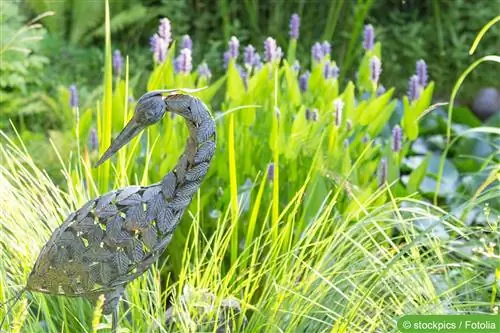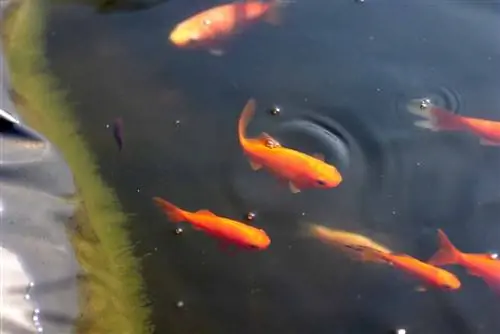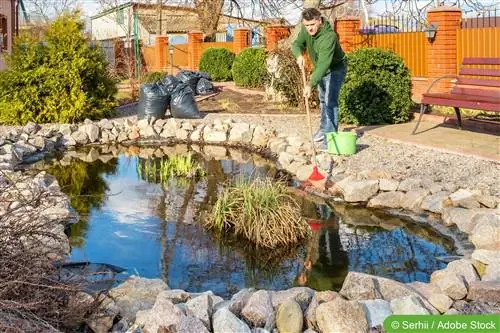- Author admin [email protected].
- Public 2023-12-17 03:39.
- Last modified 2025-01-24 12:45.
Creating a pond is one thing. But that's not enough. The bank design plays a crucial role in the overall effect of the pond and its surroundings.
The bank design includes bank reinforcement and bank planting.
Plan bank design from the start
It is beneficial if you think about the bank design and planting before the pond is completed. Then you can model the embankment according to the needs of the plants while digging. A stepped design is ideal for this. There are different levels on offer that can be planned with very different water, marsh and bank plants.
Ufermatten
Shore mats are ideal if you want to achieve a result that is as close to nature as possible. They prevent the embankment soil from slipping into the pond and thus ensure that the pond retains its shape. They also give the bank plants the support they need for undisturbed growth. There are riparian mats in many widths. You buy them by the meter and can easily roll them out. You cover the protruding pond liner with the bank mats. This protects them from UV rays, which can cause the material to become porous over time. The material of the mats is ideal for sowing moss or flowers on them. This looks beautiful and at the same time the bank is protected.
Stone foil
Stone foil is suitable for creating a natural transition from the pond to the garden using simple means. Pond edges are particularly easy to conceal. The edges of the pond are protected from UV rays. The film is waterproof. It is best to use pond liner as a base and fix the stone liner with special adhesive. The stone foil is available in different widths.
Design
A harmonious transition from the pond to the garden is important. Stones of different sizes, gravel, pebbles and boulders are ideal for bank design. They go particularly well with natural ponds. Stones can also be used for pool ponds. Precisely cut wood along the edge of the pond serves as bank reinforcement and makes the plastic edges disappear.
It is important to have a varied bank design. Depending on the water depth, cattails, irises, hedgehogs, marsh marigolds, rushes, cotton grass, purple loosestrife and others are suitable for planting. Ground cover plants are ideal for the edge of the pond or as underplanting for larger bank perennials. Carpet-forming plants such as pennywort, carpet knotweed or Günsel are practical.
If you want to protect your pond and the bank area from prying eyes, you can use miscanthus. Bamboo is also good for this. You just have to be careful not to choose the varieties that spread so much because their rhizomes can destroy the pond liner. Then it is essential to use a rhizome barrier.
There are many different options for designing the bank of the garden pond. If you don't have your own ideas, you can also visit one of the numerous exhibitions that are offered for pond construction. You can find out about everything there. Many garden centers also offer good advice. Otherwise, you can have everything planned and carried out by professionals. It's all just a question of price.






